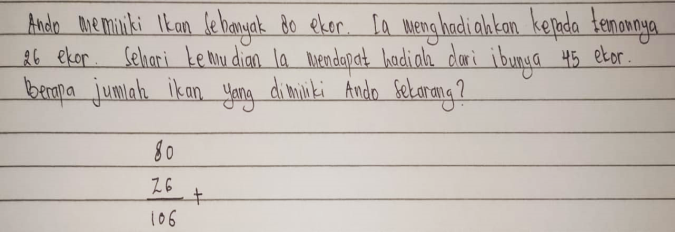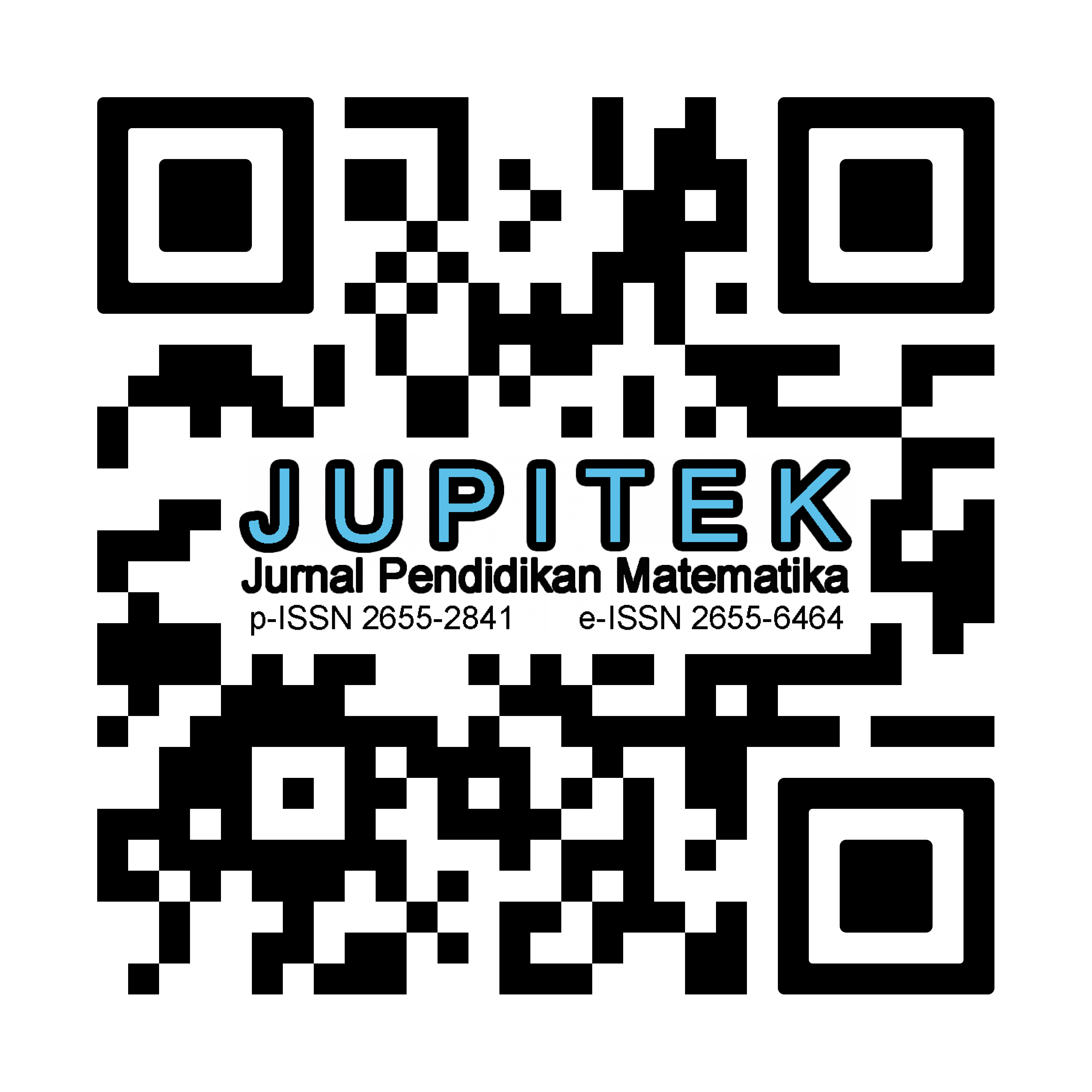ANALISIS KESALAHAN SISWA SD DALAM MENYELESAIKAN SOAL CERITA OPERASI HITUNG BILANGAN CACAH BERDASARKAN PROSEDUR NEWMAN
Abstract
Penelitian ini bertujuan untuk menganalisis dan mendeskripsikan kesalahan dalam menyelesaikan soal cerita operasi hitung bilangan cacah pada siswa kelas II SD GMIT Oenesu. Metode penelitian yang digunakan adalah deskriptif kualitatif yaitu dengan mendeskripsikan jawaban tes tertulis dan wawancara siswa berdasarkan kriteria kesalahan menurut Newman. Subjek dalam penelitian ini adalah siswa kelas II SD GMIT Oenesu yang berjumlah 11 orang dengan subjek yang diwawancarai sebanyak 4 orang. Instrumen yang digunakan berupa tes tertulis dan pedoman wawancara yang telah divalidasi. Hasil penelitian ini menemukan bahwa 10 dari 11 siswa melakukan kesalahan dalam menyelesaikan soal cerita operasi hitung bilangan cacah, minimal pada salah satu soal tes. Selain itu, hasil penelitian ini juga menunjukkan bahwa kesalahan yang dilakukan siswa terkait dengan (1) kesalahan memahami masalah yaitu siswa tidak mampu mengidentifikasi informasi yang diketahui dan ditanyakan, (2) kesalahan mentransformasi masalah yang ditandai dengan kesalahan siswa dalam menuliskan representasi simbolik matematika dari cerita yang diberikan, (3) kesalahan keterampilan proses yaitu siswa tidak mampu menyelesaikan soal yang diberikan dengan prosedur penyelesaian yang benar, dan (4) kesalahan dalam menulis jawaban akhir yaitu siswa tidak menuliskan secara tepat simpulan akhir dari masalah yang diberikan. Lebih lanjut, kesalahan memahami dan mentransformasi masalah merupakan jenis kesalahan yang paling dominan dilakukan siswa.
Downloads
References
Abdullah, A. H., Abidin, N. L. Z., & Ali, M. (2015). Analysis of students’ errors in solving Higher Order Thinking Skills (HOTS) problems for the topic of fraction. Asian Social Science, 11(21), 133–142.
Ariestina SD, M. P., Yunarti, T., & Sutiarso, S. (2014). Analisis Kesulitan Siswa Kelas VIII dalam Menyelesaikan Soal Cerita Matematika. Jurnal Pendidikan Matematika Unila, 2(2).
Bergeson, T. (2000). Using Research from the “Yesterday†Mind to “Tomorrow†Mind: Teaching and Learning Mathematics. Retrieved November 26, 2014
Dwidarti, U., Mampouw, H.L., Setyadi, D. (2019). Analisis Kesalahan Siswa Dalam Menyelesaikan Soal Cerita Pada Materi Himpunan. Journal Cendekia: Jurnal Pendidikan Matematika, 3(2), 315–322
Fuson, K. “Mathematics Education, Elementaryâ€. (1992) In M. Alkin (ed.) Encyclopedia of Educational Research (Sixth Ed. Vol. 3. New York: MacMillan.
Hartini, S., Suwarno dan Marsudi, S. 2008. Psikologi Pendidikan. Surakarta: Bimbingan dan Penyuluhan FKIP Universitas Muhammadiyah Surakarta.
Hasibuan, A. M., Saragih, S., & Amry, Z. (2018). Development of Learning Materials Based on Realistic Mathematics Education to Improve Problem Solving Ability and Student Learning Independence.
Kristianto, E., Mardiyana, & Saputro, D. R. S. (2019). Analysis of Students’ Error in Proving Convergent Sequence using Newman Error Analysis Procedure. Journal of Physics: Conference Series, 1180(1).
Magrifah., Maidiyah, E., Suryawati. (2019). Analisis Kesalahan Siswa Dalam Menyelesaikan Soal Cerita Matematika Berdasarkan Prosedur Newman. Lentera Sriwijaya: Jurnal Ilmiah Pendidikan Matematika, 1 (2),1–12.
Mahmudah, W. (2018). Analisis Kesalahan Siswa dalam Menyelesaikan Soal Matematika Bertipe HOTS Berdasarkan Teori Newman. UJMC: Unisda Journal of Mathematics and Computer Science, 4(1), 49-56.
Peranginangin, S. A., Saragih, S., & Siagian, P. (2019). Development of Learning Materials through PBL with Karo Culture Context to Improve Students’ ProblemSolving Ability and Self–Efficacy. International Electronic Journal of Mathematics Education, 14(2), 265– 274.
Peraturan Menteri Pendidikan Nasional Republik Indonesia. 2006. Peraturan Mentri Pendidikan Nasional Republik Indonesia Nomor 22 Tahun 2006 Tentang Standar Isi untuk Satuan Pendikan Dasar dan Menengah.
Roebyanto, G. & S. H. (2017). Pemecahan Masalah Matematika Untuk PGSD. PT Remaja Rosdakarya.
Rohmah, M., & Sutiarso, S. (2018). Analysis problem solving in mathematical using theory Newman. Eurasia Journal of Mathematics, Science and Technology Education, 14(2), 671–681.
Rostika, D., & Junita, H. (2017). Peningkatan Kemampuan Pemecahan Masalah Siswa SD Dalam Pembelajaran Matematika Dengan Model Diskursus Multy Representation (DMR). EduHumaniora: Jurnal Pendidikan Dasar, 9(1), 35-46.
Sudirman, S., Cahyono, E., & Kadir, K. (2019). Analisis Kemampuan Koneksi Matematis Siswa SMP Pesisir Ditinjau Dari Perbedaan Gender. Jurnal Pembelajaran Berpikir Matematika, 3(2).
Sukmadinata, Nana Syaodih. 2009. Metode Penelitian Pendidikan. Bandung: Remaja Rosdakarya.
Suyitno, A., & Suyitno, H. (2015). Learning Therapy for Students in Mathematics Communication Correctly Based–on Application of Newman Procedure (a Case of Indonesian Student). International Journal of Education and Research, 3(1), 529–538.
White, A.L. (2010). Numeracy, Literacy and Newman’s Error Analysis. Journal of Science an Mathematicis Education in Southeast Asia, 33(2), 129 – 148.

Copyright (c) 2021 Patrisius Afrisno Udil, Maria Elfantiana Senia, Yosefina Lasam

This work is licensed under a Creative Commons Attribution-NonCommercial-ShareAlike 4.0 International License.
License and Copyright Agreement
By submitting a manuscript to Jurnal Pendidikan Matematika (JUPITEK), the author(s) certify and agree to the following terms:
- Originality and Authority: The submitting author is authorized by all co-authors to enter into this agreement. The manuscript describes original work that has not been published previously in a peer-reviewed journal, nor is it under consideration for publication elsewhere.
- Approval: Its publication has been approved by all author(s) and by the responsible authorities of the institutions where the work was carried out.
- Rights: The authors secure the right to reproduce any material that has already been published or copyrighted elsewhere.
- Licensing and Copyright: Authors retain the copyright to their work.
- License Grant: The authors grant Jurnal Pendidikan Matematika (JUPITEK) the right of first publication, with the work simultaneously licensed under the Creative Commons Attribution-NonCommercial-ShareAlike 4.0 International (CC BY-NC-SA 4.0).
- Self-Archiving: Authors are permitted and encouraged to deposit the published version of their article in institutional repositories, on their personal websites, and other academic platforms, with proper acknowledgment of its initial publication in Jurnal Pendidikan Matematika (JUPITEK).





.png)


